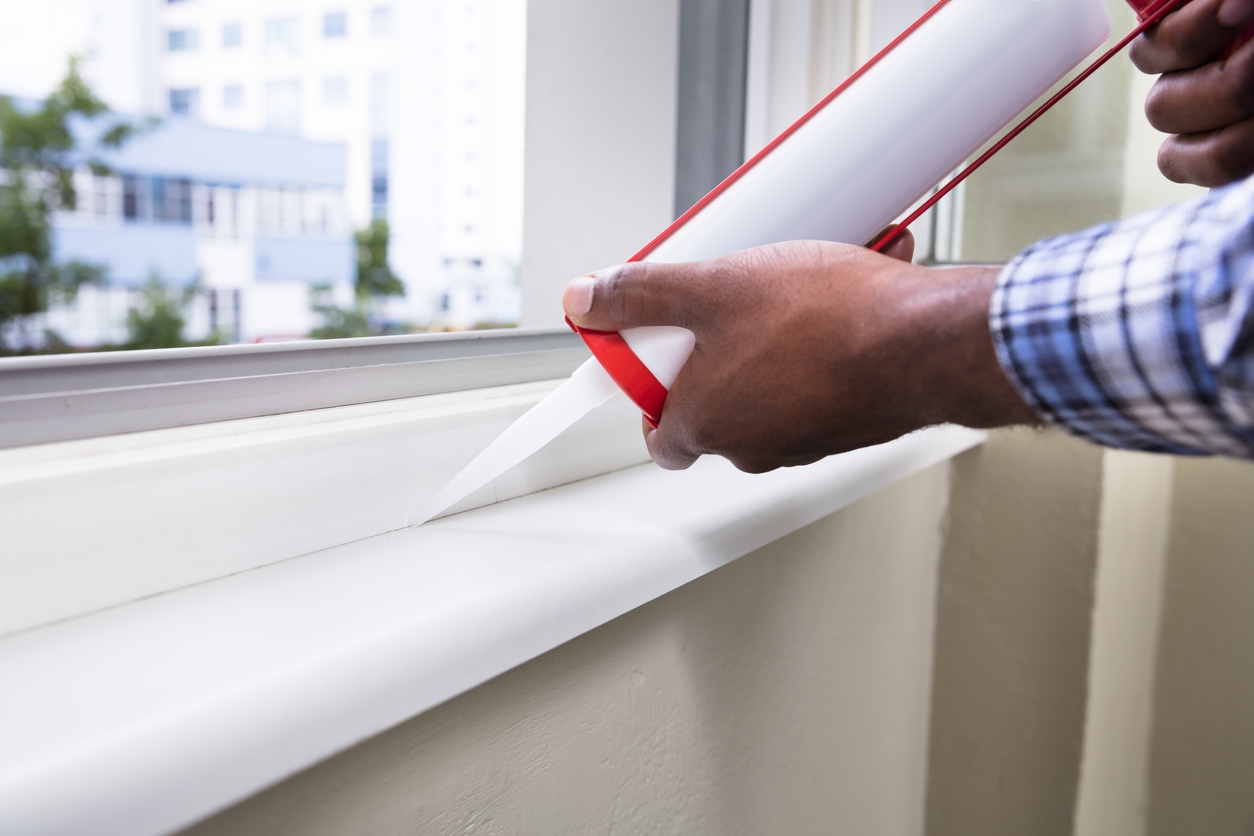Rather than hire a professional to apply or repair caulk, homeowners can perform this simple task on their own, provided the caulk appropriate for their application is being used. There are a number of different caulks on the market, which can be intimidating for first timers. Use this cheat sheet as a guide to understand the available caulk options so to help decide which type is best for your application.
(For the purposes of this article the term caulk will be referred to interchangeably with sealant.)
Water Based Caulk
Water based caulk is perfect for interior applications such as window interior frame and door interior trim. This caulk is a popular choice among consumers since it releases little odor and can be easily cleaned using water. Within the water based family are a number of subcategories designed for specific applications.
Acrylic Latex Caulk is best used to fill small holes and cracks found in wood or masonry material. This sealant can be applied to high moisture areas but is not recommended for areas of consistent water exposure. Acrylic latex caulk has a significant lasting ability and would not require replacement for 10-15 years.
Vinyl Water Based Caulk is similar to acrylic latex caulk as it is easy to apply with an easy cleanup. The major differencevinyl water based caulk and acrylic latex caulk is that it lasts approximately 5 years longer than acrylic latex caulk. It is important to note that this is not a sealant to be used in areas that may experience expansion or contraction, as it is not very flexible and would not adhere for very long.
Tub and Tile Caulk protects against mildew growth in areas of moisture. While this sealant is perfect for simple repairs in wet locations, it is not designed to withstand high water use areas. Tub and tile caulk is great to have on hand for “quick fixes”.
Silicone Acrylic Caulk
Silicone acrylic caulk is the perfect combination of acrylic latex and silicone creating a compound that is easy to use yet strong to withstand. It is great for interior and exterior applications and is one of the few sealants that work great on metal, glass or tile. Silicone acrylic caulk can endure moderate temperature changes and has an impressive life span of 25-35 years.
Silicone Caulk
Silicone is a stronger alternate to tube and tile latex caulk. It is generally mold and mildew resistant but unlike tube/tile latex caulk, has an extended life span. Silicone is significantly strong yet flexible but should not be used on porous surfaces like wood. It is also popular as it is non-toxic and can be applied at any temperature.
Polyurethane Foam
Polyurethane foam is great for filling large gaps or acting as an insulator preventing infiltration of the elements. It is often used for electrical applications around outputs or for plumbing around pipe penetrations. Be sure to use polyurethane foam for exterior projects only.
Butyl Rubber Sealants
The impressive strength of butyl rubber sealant makes it great for sealing out water in gutters, metals, masonry and chimneys. It is the best water proofing sealant for foundations and anyplace where moisture and movement are commonplace. It does however have a life expectancy of only 2-10 years. In comparison to other sealants it is often found difficult to apply, takes longer to cure and offers low flexibility.
Synthetic Rubber Caulk
Synthetic rubber caulk is one of the most flexible yet strong products on the market. It is ideal for use on exterior joints and may be applied in wet or cold conditions. Synthetic rubber caulk is great for roofs, wood siding and joints that show movement.
Modified Silicone Polymers
Modified silicone polymers are unique in that they offer permanent flexibility. It works best on vinyl, fiber cement, aluminum and wood siding applications. This caulk is great for window/door exterior applications and can be applied in various conditions including wet and low temperatures.
With this guide, homeowners no longer need to rely on outside help to perform maintenance on their homes. By completing repairs themselves, homeowners save significant time and money, which would otherwise be spent on professional services.

